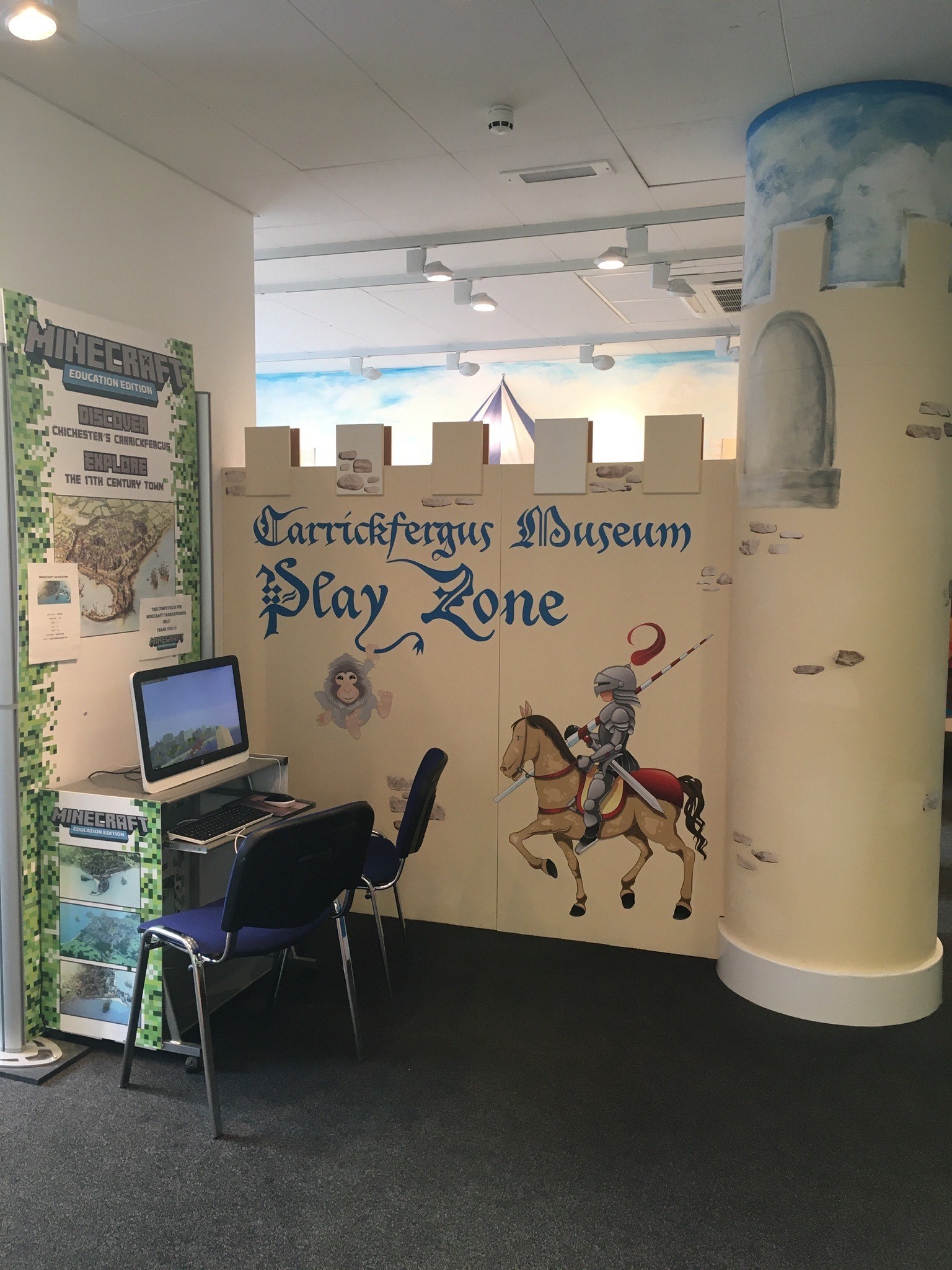The Carrickfergus Museum Play Zone: Audience Delight Winner 2019-2020
We often hear from arts and cultural organisations that one of their aims is to reach new audiences and ideally, to turn them into loyal engaged visitors. It can appear as a difficult task to many organisations with limited resources, but it’s not impossible to accomplish.
The Carrickfergus Museum has not always provided a space dedicated to young people and their families. Young audiences had been on their mind for a while – how to make their collection accessible to children? How to make their building more kids-friendly?
They succeeded in their venture and they’re our winner for the Best New Life for an Empty Space Audience Delight Award 2019-2020. In this case study, we will look at how the play zone came about, how Carrickfergus Museum achieved to use their collection in creative ways to attract a new audience and how they managed to create a new series of events and workshops specifically aimed at children and toddlers part of their general programming.
The Play Zone

In 2017, Northern Ireland Museums Council and National Lottery Heritage Fund launched their Playful Museums pilot programme which was a year-long funding scheme with training, workshops and development of new community partnerships for local museums targeting under 5s. At the same time, the Carrickfergus Museum had a new vacant area within their building, right at the entrance of their gallery, which was ideal for a new purpose. The museum’s team knew the way their collection was shown was not suitable for children – every item is displayed in adult-size cases – so they had to look into alternative methods to become more accessible to younger audiences. This room could be the answer to their problem and that is what it became.
The organisation created the free-access play zone with the help of the Playful Museums’ learning. The Carrickfergus Museum exhibits historical objects and stories from the medieval period to more recent times. To connect the play zone to the museum’s collection, they maintained this medieval theme, which is also conveniently, a preschool subject. The play zone took the shape of a castle, reminiscent of Carrickfergus Castle and used imagery of knights, armours, shields, surcoat and heraldry for its décor, games and activities. They also had a mascot puppet created, Mika the monkey, that they linked to a children gallery trail with an illustrated printed booklet and map that kids can follow at their own pace with their parents.
From the same pilot programme, the museum partnered with the local Horizon Surestart to deliver a 6-week programme, with weekly sessions themed around the play zone. Surestart is a government funded initiative offering services specifically aimed at families with children under four. It allowed them to have a first-hand experience of how their future programme could be structured and what was appropriate for different age range. They benefited from additional training and support to later present events such as Toddle Tuesdays and Super Saturdays.
Although the pilot project was a great nudge for Carrickfergus Museum to jump and realise their goal to reach and engage young audiences, the funding was time limited. It then begs the questions:
How did they continue their children programme offer once Playful Museums ended and what were the challenges?
Maintain the play zone
Keeping it tidy is seen by the team as one of the main challenges, as kids often scatter toys and games around the room without putting them away when they leave. When items break and need to be replaced, they try to find sturdy materials that will last longer to avoid spending significant amounts in the long-run. They also use Play Resource in Belfast, a charity that collects non-toxic materials to redistribute for free to NI organisations working with kids.
Make children activities part of their regular calendar
The Carrickfergus Museum team only has two members and one of them works part-time. But that did not leave them deflated. Shirin Murphy, museum officer, says that it is deciding to go ahead, commit and make it part of your programme anyway. They applied the learning from the pilot project to their public programming and allocated their own funds. They sometimes lead the workshops themselves with crafts and music. Other times, they use a bit of budget that was put aside for this purpose and hire a facilitator.
Build relationships
On the back of the pilot programme, they made connections that they maintained until today with local organisations and facilitators. For example, Horizon Surestart now share the museum’s kids events with their network on their different channels. But they also reached out to new workshop coordinators that they book on a regular basis.
Attendance
Their current event – Super Saturday, a monthly free session for young children – is not always full. Numbers in attendance fluctuate throughout the year, like in any other venue. However, the play zone is always free to access during opening hours and became part of a routine for local families.
Final thoughts
Carrickfergus Museum took the leap, determined not to narrow the experience to the Playful Museums’ project’s duration only. When an organisation is restricted in its finances and funding, it can be difficult to imagine how that can be changed. Although the museum encountered some challenges, they succeeded in reorganising their budget to make it work with a low-cost and DIY approach. Carrickfergus Museum showed us that change is always within reach and small changes can make a big difference. Well done!

